

By Sandra Lai
As promised, I returned to Ethiopia, this time during the wolf breeding season. And I decided to do exactly like the wolf monitors do and go to the Web Valley on horseback! Alongside the Sanetti Plateau—the largest Afroalpine plateau in Africa—, Web is the most important Ethiopian wolf study site in Bale Mountains. The ride from the EWCP Headquarters near Dinsho to the Sodota Camp in Web takes about 3 hours. By car, it takes only 40 min. But we would take a longer road, “the road for horses”, as Hamza, one of the wolf monitors, explained.
We moved from the green-shaded old northern woodlands dominated by Juniperus and Hagenia trees surrounding the EWCP house to follow a long dirt road bordered by yellow fields of crops as far as the eyes can see—harvested wheat fields, barley fields, potatoes... I was definitely not an experienced horse rider, but these horses have done the trip so many times that they knew exactly where they were going. So you just had to adjust their direction slightly and the speed. Ethiopians are, by tradition, excellent horse riders and make it look so effortlessly easy! “It’s like they were born on a horse”, as Eric put it. For me, maintaining my balance when the horse was trotting took all my strength and willpower! But travelling on horseback let me experience the landscape from a whole new perspective. As we approached Web, thousands of dry Kniphofia foliosa (red hot pockers, or torch lilies), their leaves parched like old papyrus, made their appearance on the slope. Up in the valley, kilometres of sand-coloured grass, dense and extremely short, like an infinite Persian mat, neatly covered the ground. Mixed in there were large flat rocks decorated with blue-green or fiery orange lichen and velvety patches of dark-green moss. After arriving to Sodota Camp, the horses were rewarded with barley and then left to roam freely. We, on the contrary, left straight away to check a few dens.
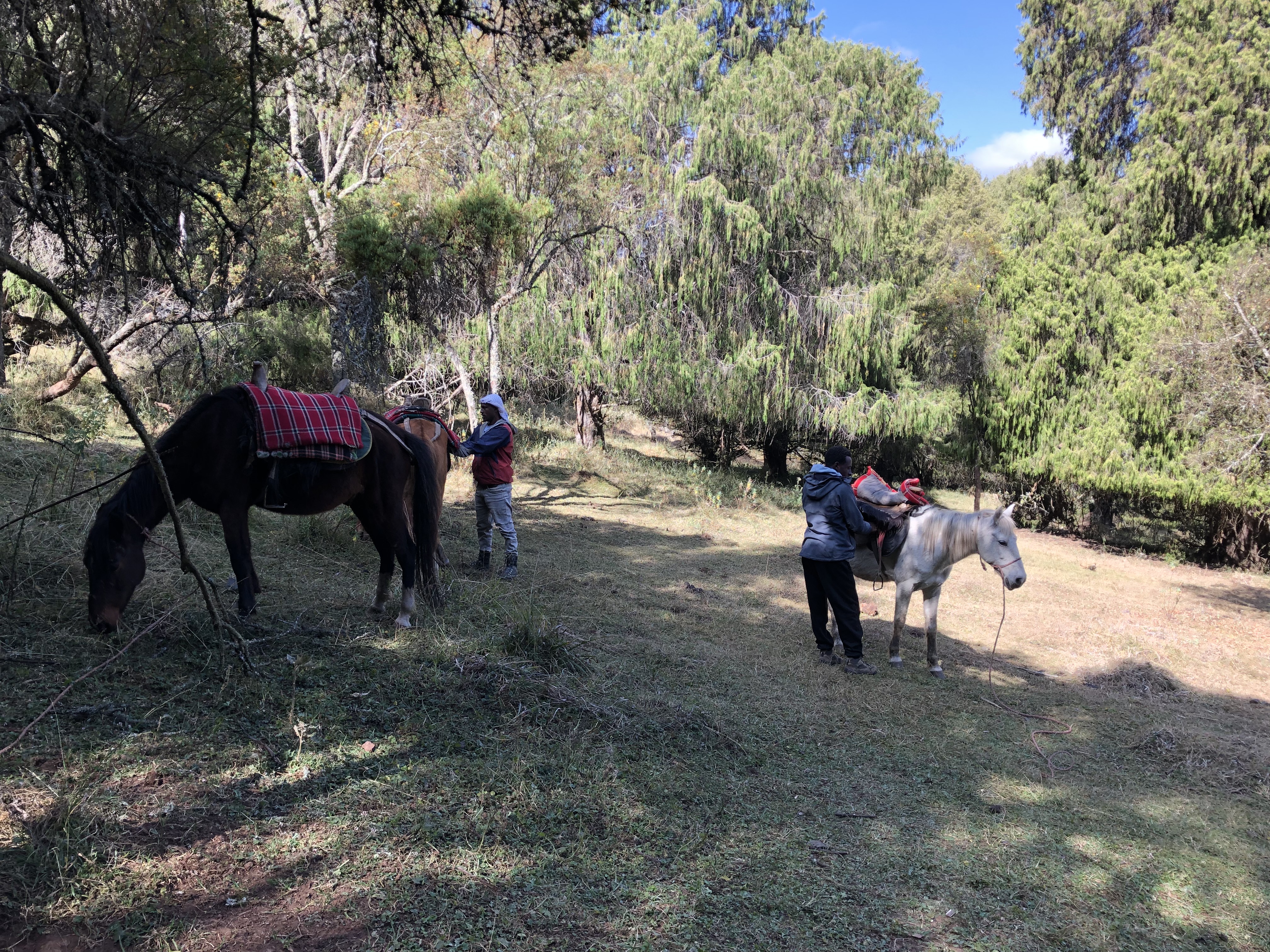
Most Ethiopian wolf females will dig a new den each year. Finding the dens of the focal packs before the pups emerge is therefore hard work each year. How do you find a den? Well, first, you search for the dominant female of the pack (note that you must be able to recognise it’s her and most wolves are not ear-tagged!). If she is breeding, she will either look pregnant or lactating. Then, you do your best to follow her up and downhill in the broken landscape, from a distance, as she forages, travels or do any other Ethiopian wolf activity. If you are lucky, she will decide to return to her den at some point… You need to see her entering it to be certain it is really her primary den. Needless to say, finding dens takes dedication. It may take days or weeks, and the combined efforts of several wolf monitors. Therefore, I felt really lucky to be shown my first two dens, the Alandu den and the Bowman den. Both were one big hole in the ground, but in very different surroundings, one being hidden in thick bushes and the other being under a big rock on a hillside. We saw adults foraging nearby, but no pups. We would visit more dens the next day.

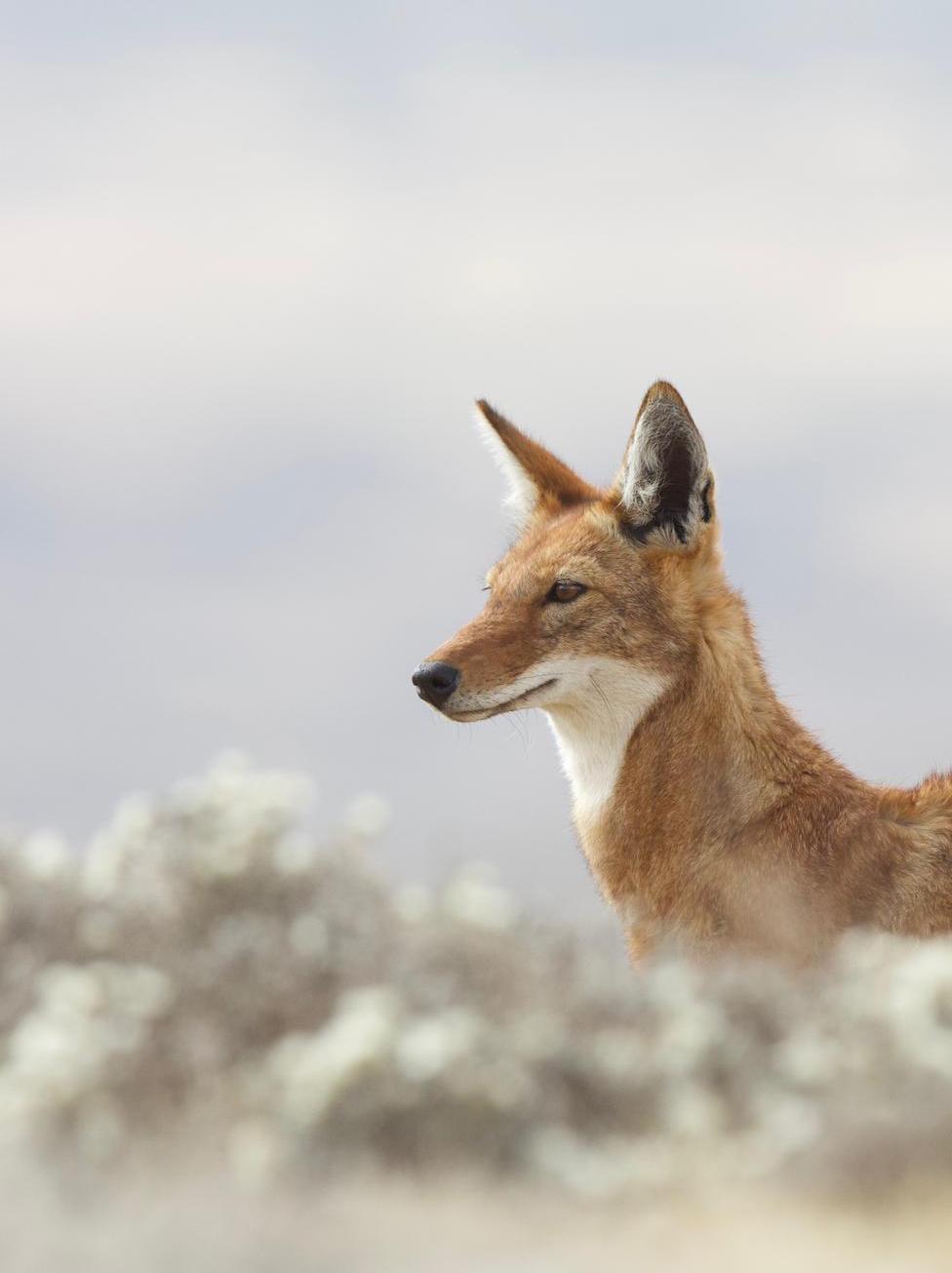
As on the Sanetti Plateau, morning wolf monitoring in Web starts at the break of dawn. Tiny ice crystals shimmered on my flysheet and the ground as I extirpated myself from my tent in almost complete darkness. At once, the cold air wrapped me tightly… After a quick breakfast, I headed outside with Mengistu. Sultan, the wolf monitor coming with us today, was already waiting. We started walking under the faint light of a white waning moon hanging in the pastel pink and blue morning sky. As the solar disk slowly rose above the hills, illuminating the frosty grass blades and casting long shadows from our silhouettes, the echo of a wolf pack greeting exploded in the air… The Meggity pack, 8 of them, were meeting in the distance, chattering and calling each other joyously. We listened to their calls for a few moments before continuing our round in the valley.
Over 3 days, I visited the territory of 5 focal packs (Alandu, Bowman, Hangafo, Gata and Meggity). The landscape was absolutely stunning. The Web Valley is a glacial valley that was covered by ice only 10,000 years ago and has incredible geological formations: pillar-like rocks are aligned in oval-shaped mounds, with an extremely flat top. It feels like you are surrounded by long castle walls and massive rock fortresses. The moraines and other features such as weathered boulders are the testimony of the past glacial history of the Ethiopian Highlands and the paleoclimatic changes that occurred in the Afroalpine environment.
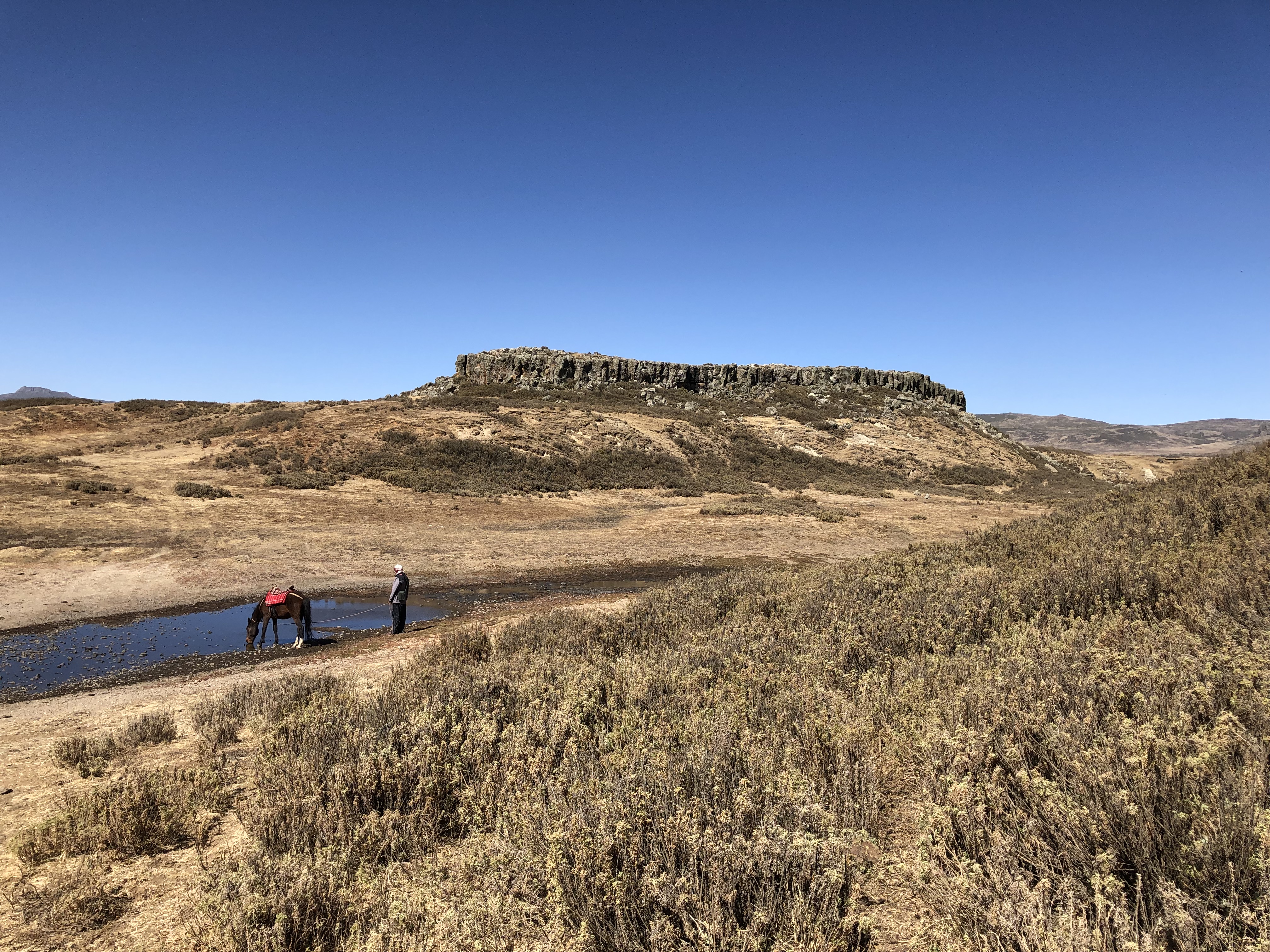
Still, I also had surprising sights… As we climbed on top of a hill in the Gata territory, I suddenly spotted the shiny tower of a silver mosque on the opposite side of the valley, only a few kilometres from the Gata den. A village?! Mud houses surrounded by wooden fences were nestled close to the mosque. Cows were grazing around, a pack of dogs were playing together excitedly, a man on a horse was guiding a donkey... The Web Valley is inside Bale Mountains National Park, but illegal settlements are ever present. Why are the wolves denning so close to people? Sultan told me that Gata wolves have a small territory, they are restricted by other packs. “We have lost pups here in the past, probably because of dogs”, he added. I shuddered. May these ones make it this year. I know life in Ethiopia is not always easy, I cannot blame people for wanting to make a living. After a last look at the den, a deep hole hidden in tall Artemisia bushes, we left.

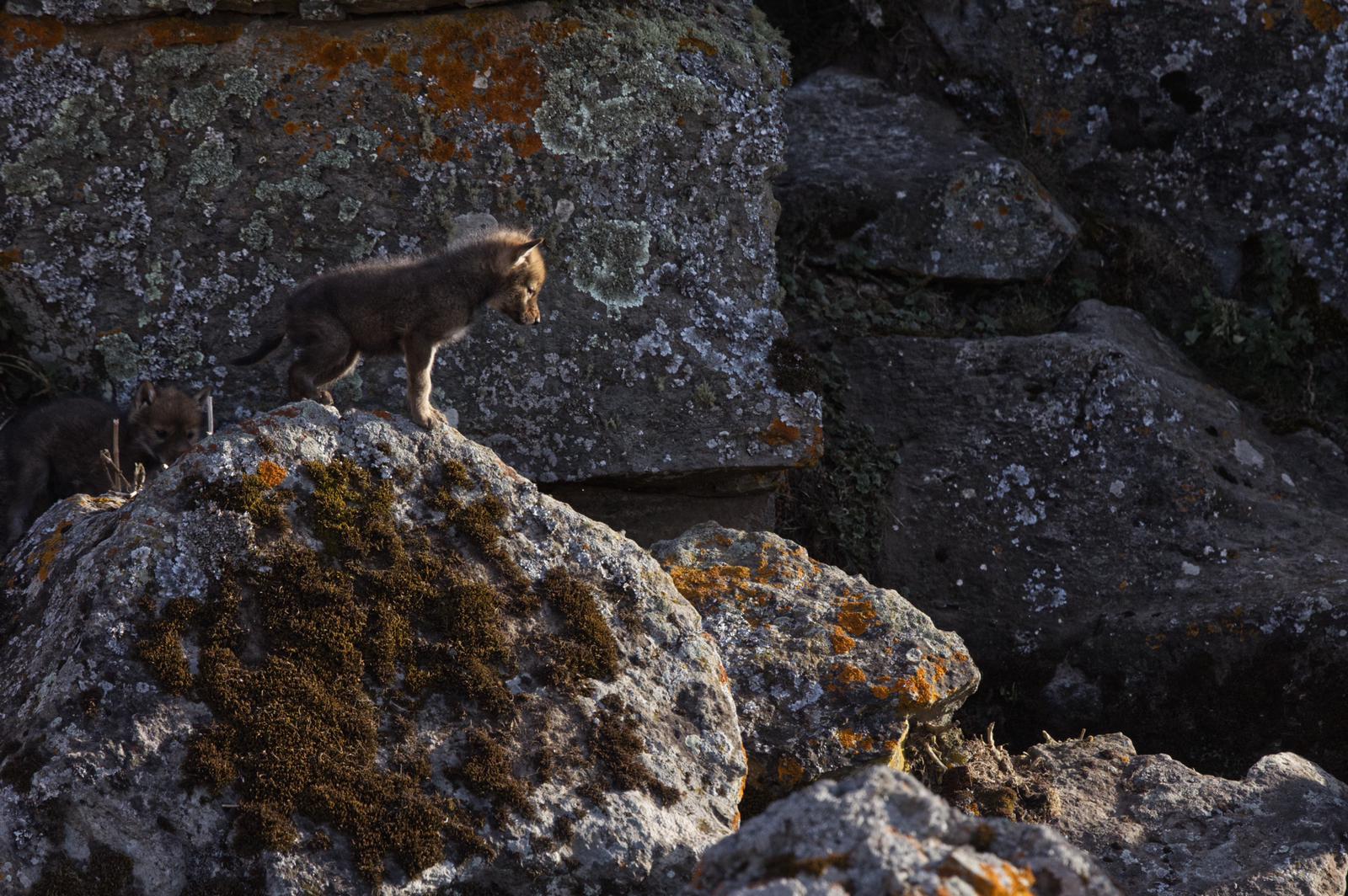
No pups emerged when I was in Web. The first pups I saw were the ones on Sanetti. As of now, for this breeding season, a total of 32 pups were counted at the two study sites. As much as I am happy that so many new pups were born this year, I also know that the Afroalpine does not have unlimited space… All packs are getting larger. Even before this year’s pups, the Meggity pack had 13 adults, Bowman, also 13, Mckenna, 14. With their 7 new pups, the Meggity pack has now reached 20 individuals. Dispersal is extremely limited. If they come down the mountains, fields of crops, houses, roads, and dogs await. My heart sank as I heard Alo telling me bluntly that, because of their high density, the wolves will probably be hit by a rabies outbreak next year. He has seen it too many times. Because of their tight family bond, if one individual gets rabies, it will spread in the whole pack like wildfire. And then to neighbouring packs…
EWCP monitors closely all suspicious deaths found in the field and investigates any report of sick dogs in nearby communities. Reactive vaccination of wolves is undertaken in case of a rabies outbreak. But trapping wolves and vaccinating them takes time and is extremely exhausting for the team. Some wolves still die in the meantime. Alo has a fierce personality and tough exterior, he’s always in the frontline of the action. But one time, while we were walking on Sanetti, another wolf monitor, Abdi, told me softly: “you know, every time Alo sees a dead wolf in the field, he cries.” I think that certainly shows how much Alo’s love for the wolves is genuine. And it’s the same for everyone in EWCP. Indeed, thanks to EWCP’s work over the last three years, many wolves in Bale Mountains have received a preventive oral vaccine, so those ones are likely to be protected.
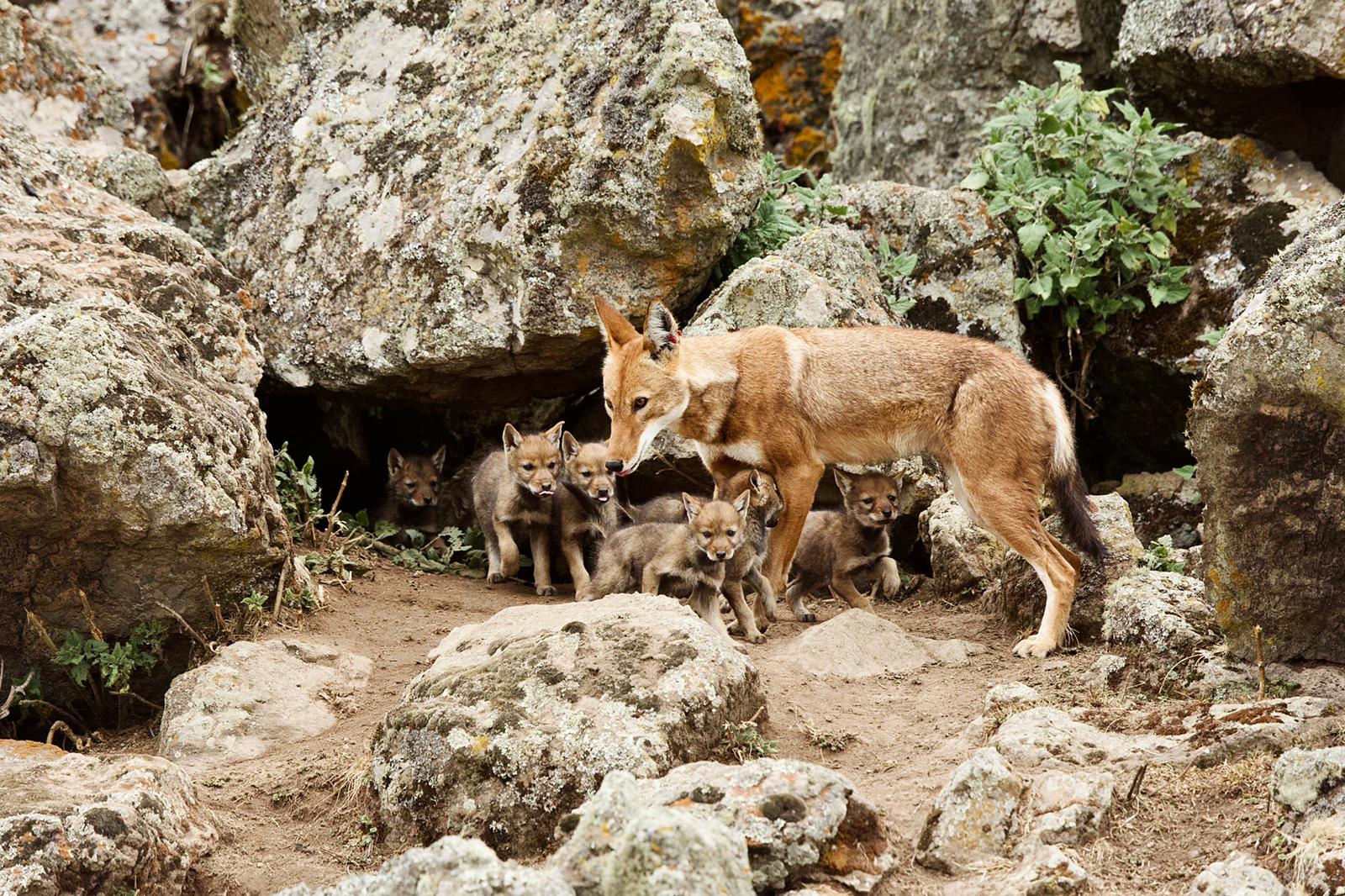
The pups I saw on Sanetti were healthy and well-fed, cuddling and playing together under the bright sun. Their coats were already starting to turn from their blackish baby colour to the tan orange of older juveniles. Will a rabies epidemic really be the fate of these pups? I hope not. I hope that the protection provided by the oral vaccines will reduce the likelihood and severity of outbreaks.
But for now, we can only wait and see...
To learn more about EWCP’s research and conservation activities, follow us on Twitter @KyKebero @Arctic_paws @ClaudioSillero @MarinoJorgelina and visit our website: https://www.ethiopianwolf.org/programme
We warmly thank Adrien Lesaffre for sharing with us his pictures of Ethiopian wolves.